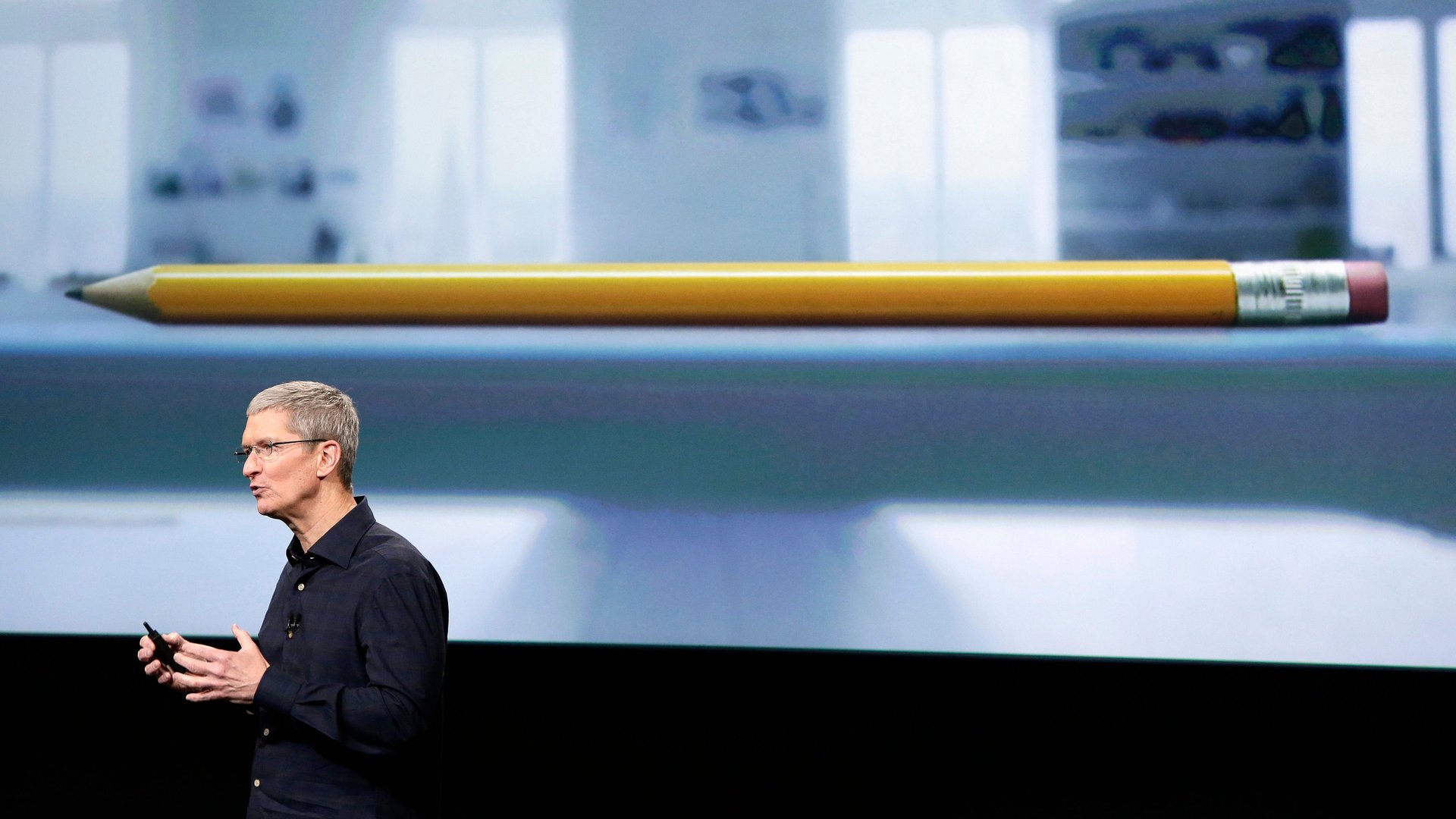Apple could be changing its mind on the stylus
Signs are pointing to Apple releasing a stylus in the near future. Apple is rumored to be releasing a larger-screened, more powerful “iPad Pro” later this year, and two patent applications uncovered June 30 suggest Apple may be exploring adding a stylus as an input method for its upcoming tablets.


Signs are pointing to Apple releasing a stylus in the near future. Apple is rumored to be releasing a larger-screened, more powerful “iPad Pro” later this year, and two patent applications uncovered June 30 suggest Apple may be exploring adding a stylus as an input method for its upcoming tablets.
One of the patent applications outlines a stylus and camera system that can sense the texture of a surface—like a piece of canvas—which it could then transfer to a tablet screen. Then the tablet owner could draw on the tablet screen with the stylus and get the feeling that they’re drawing on whatever they scanned. Add Apple’s Force Touch into the mix—which gives screens the ability to register different amounts of pressure differently—and Apple may be on the way to recreating the feeling of drawing on a digital device.
Apple currently holds three patents for styluses, has applied for six more, and a further three for various stylus functions. That’s a lot of stylus patents for a company that’s eschewed the stylus since Steve Jobs launched the first iPhone.
But Apple is not infallible. It’s changed its mind on myriad stances over the years to align themselves with what consumers are after—and what Jobs hated.
Jobs once said that “no-one’s going to buy” a big phone. Apple has since started selling larger iPhones—including the supermassive 6 Plus—all of which sold quite well. Around the same time, Steve Jobs said that smaller iPads wouldn’t happen. A year after he passed away, Apple introduced the iPad Mini.
Apple tends to wait to bring a product to the market until it’s seen there’s demand for one. The Samsung Galaxy Note range of phablets has consistently been some of Samsung’s bestselling phones, and they are shipped with styluses. And FiftyThree’s Paper—the sketching app for the iPad that won an Apple design award in 2012—has its own chunky stylus, which sells for a very Apple-like price.
This is all assuming Apple is building a stylus at all, or a larger iPad. Apple, of course, declined to comment. It wouldn’t be Apple’s first foray into tablets with styluses, either. The low-selling Newton MessagePad of the Nineties, Apple’s first touchscreen device, came with a stylus. One of the reasons it didn’t take off: the tablet didn’t do a great job of recognizing handwriting written with the stylus.
But the timing feels right for the Cupertino giant to re-enter the market. Apple entered the wearables game a year after Google, and Microsoft has a stylus out for its Surface tablets. If Apple can turn these patents into something that adds value beyond what others are doing, it may be touching on something big.